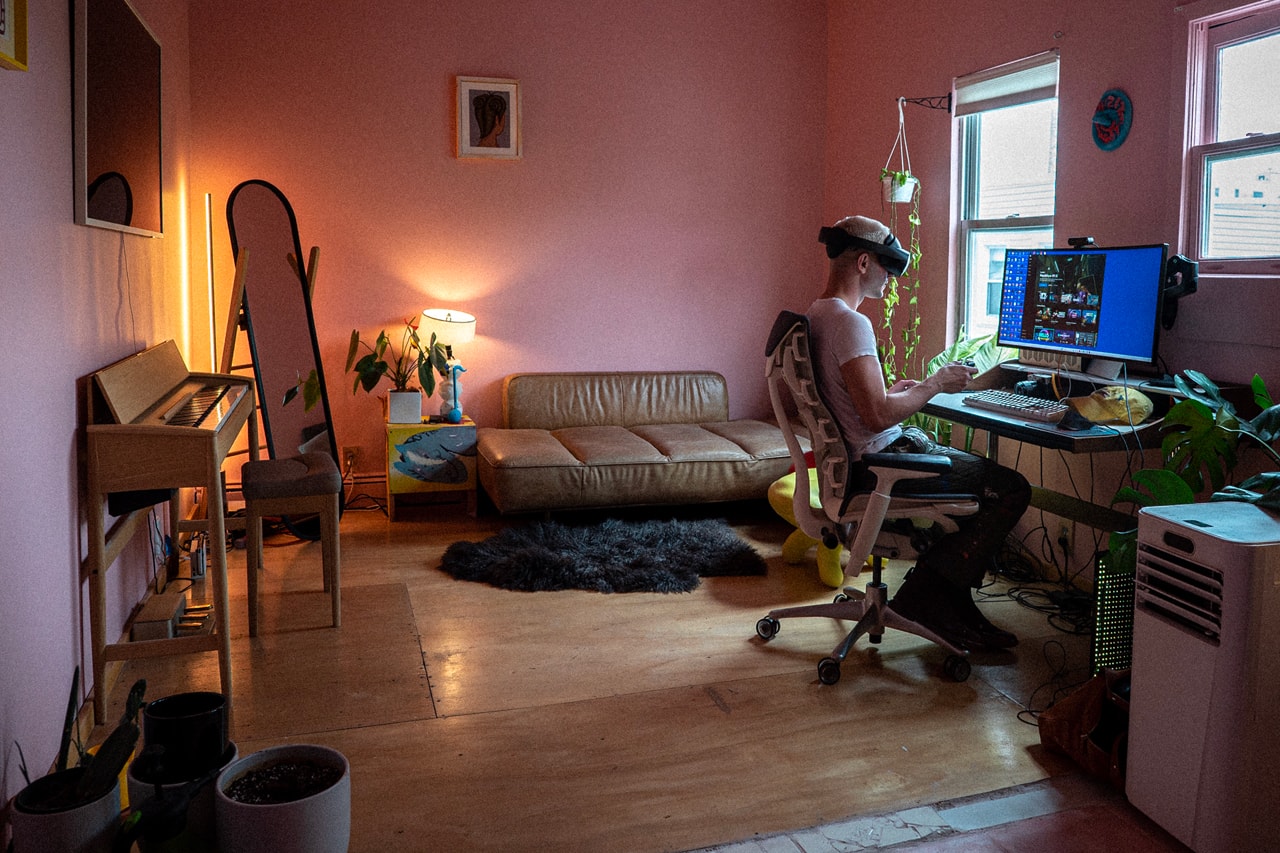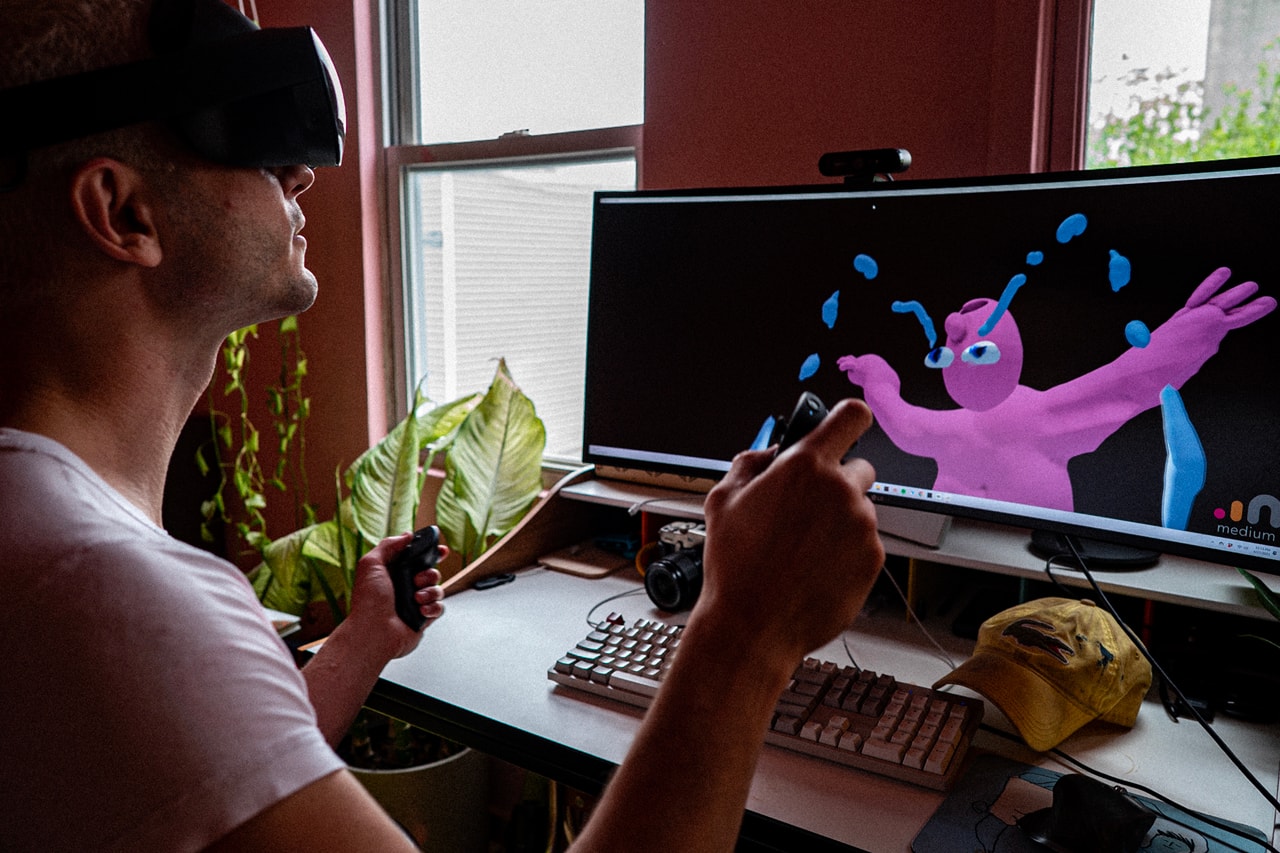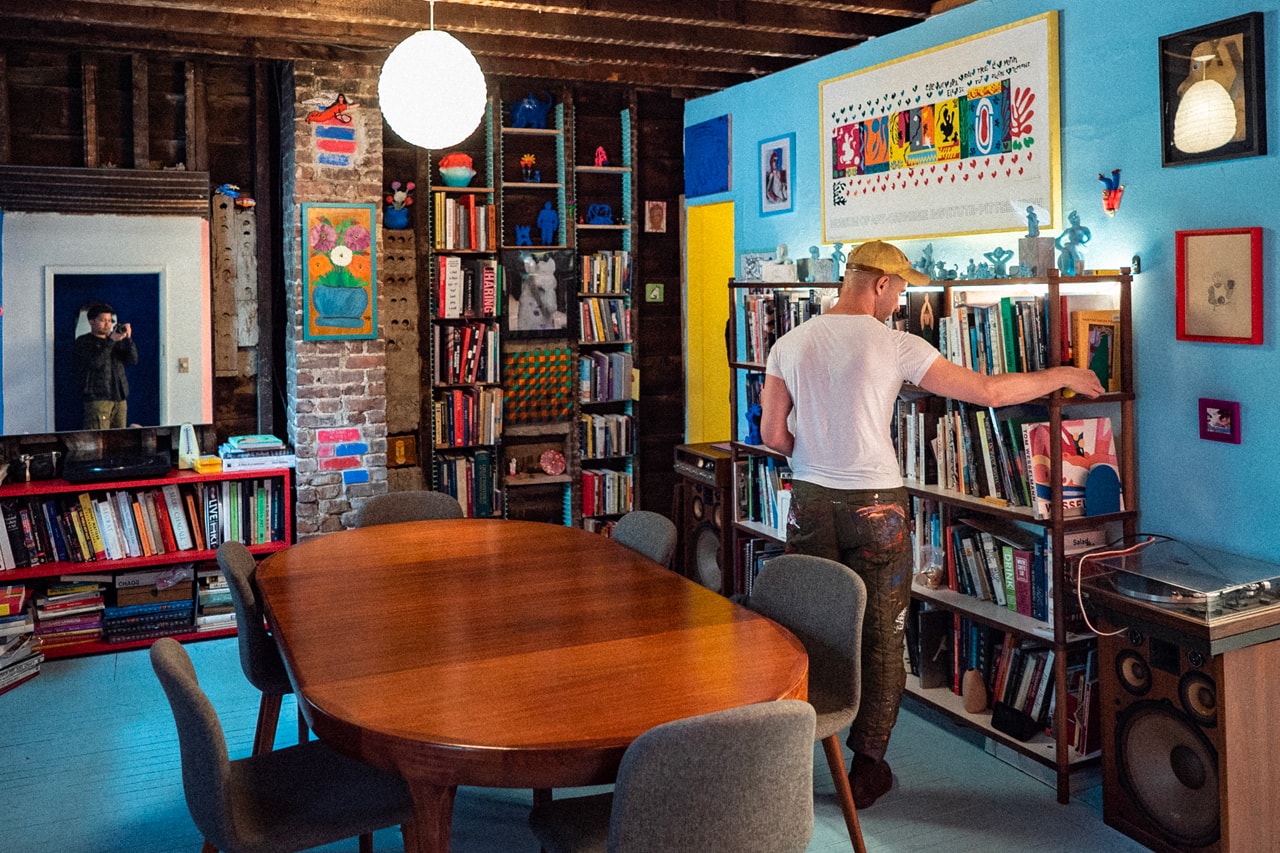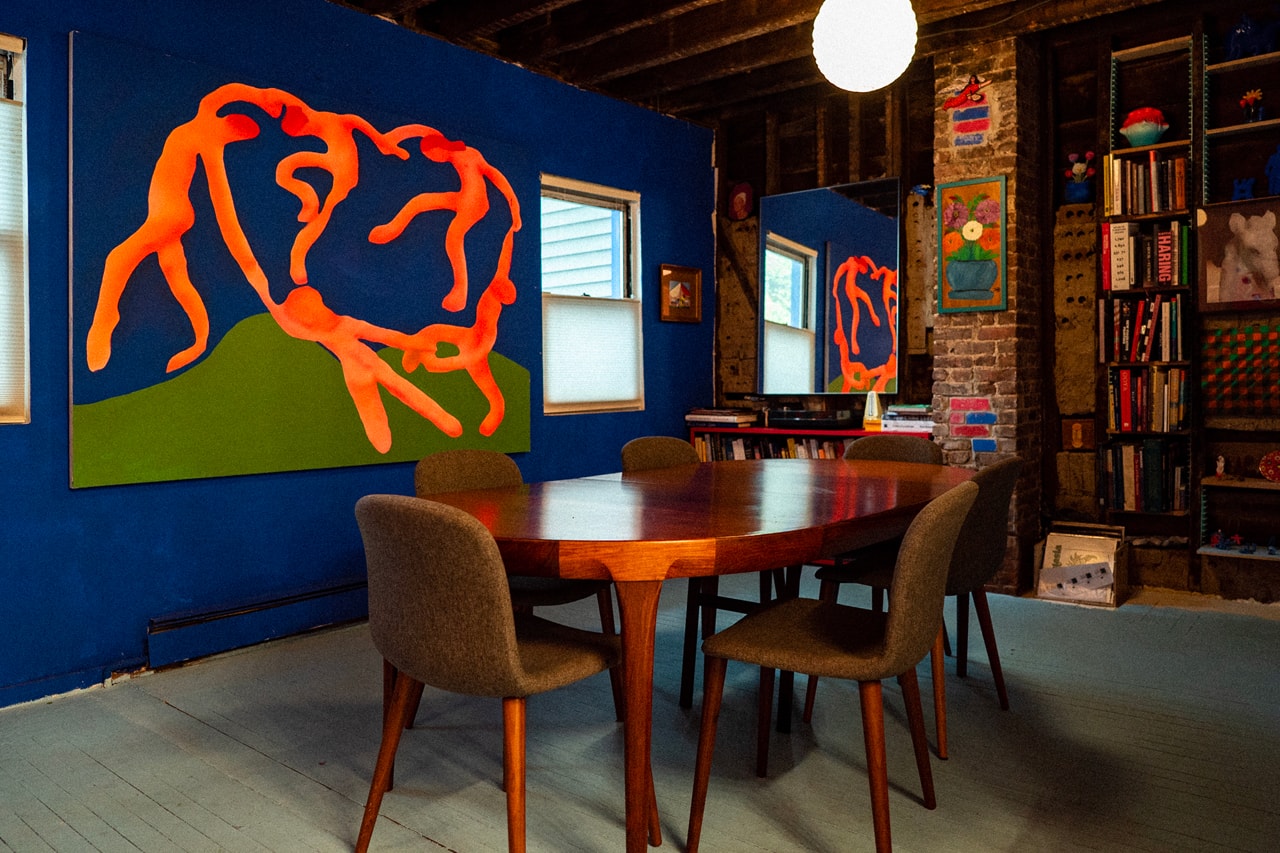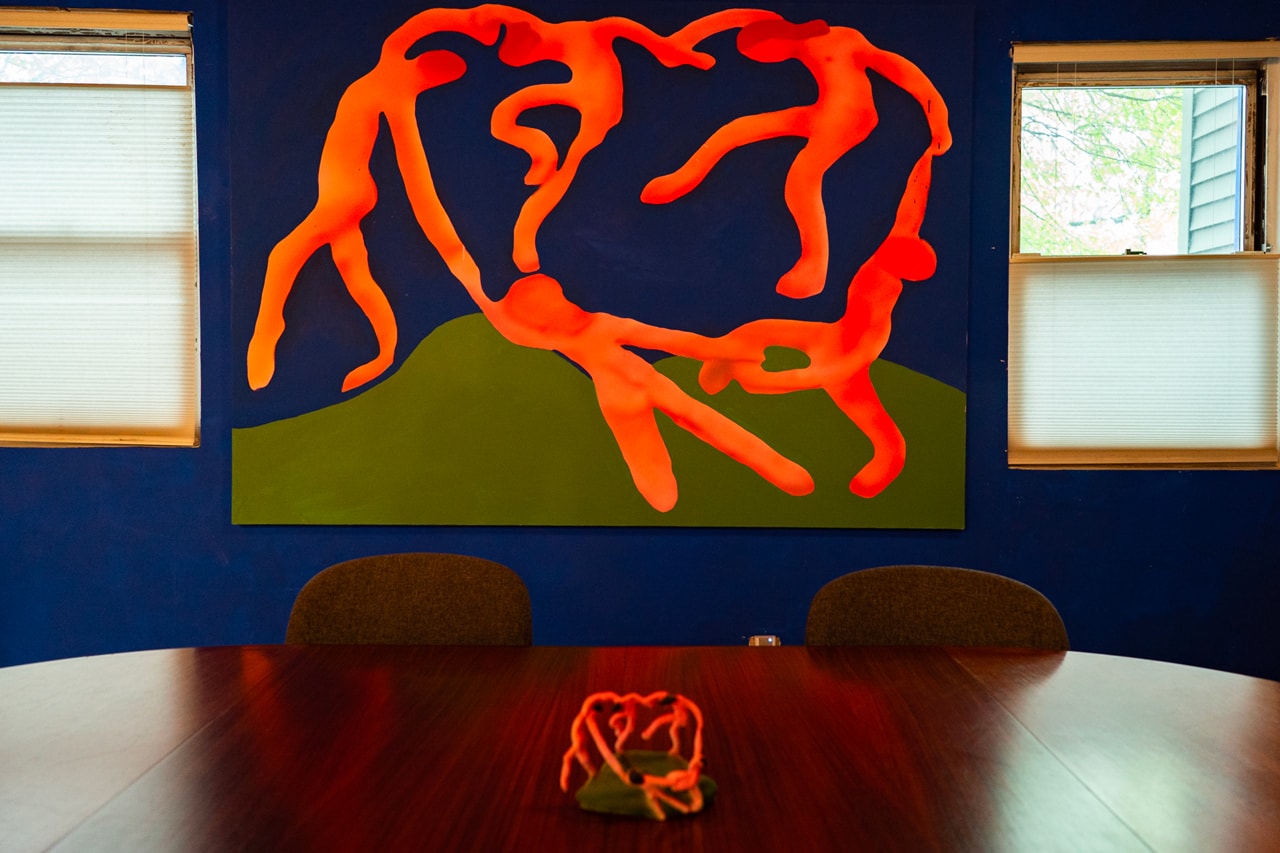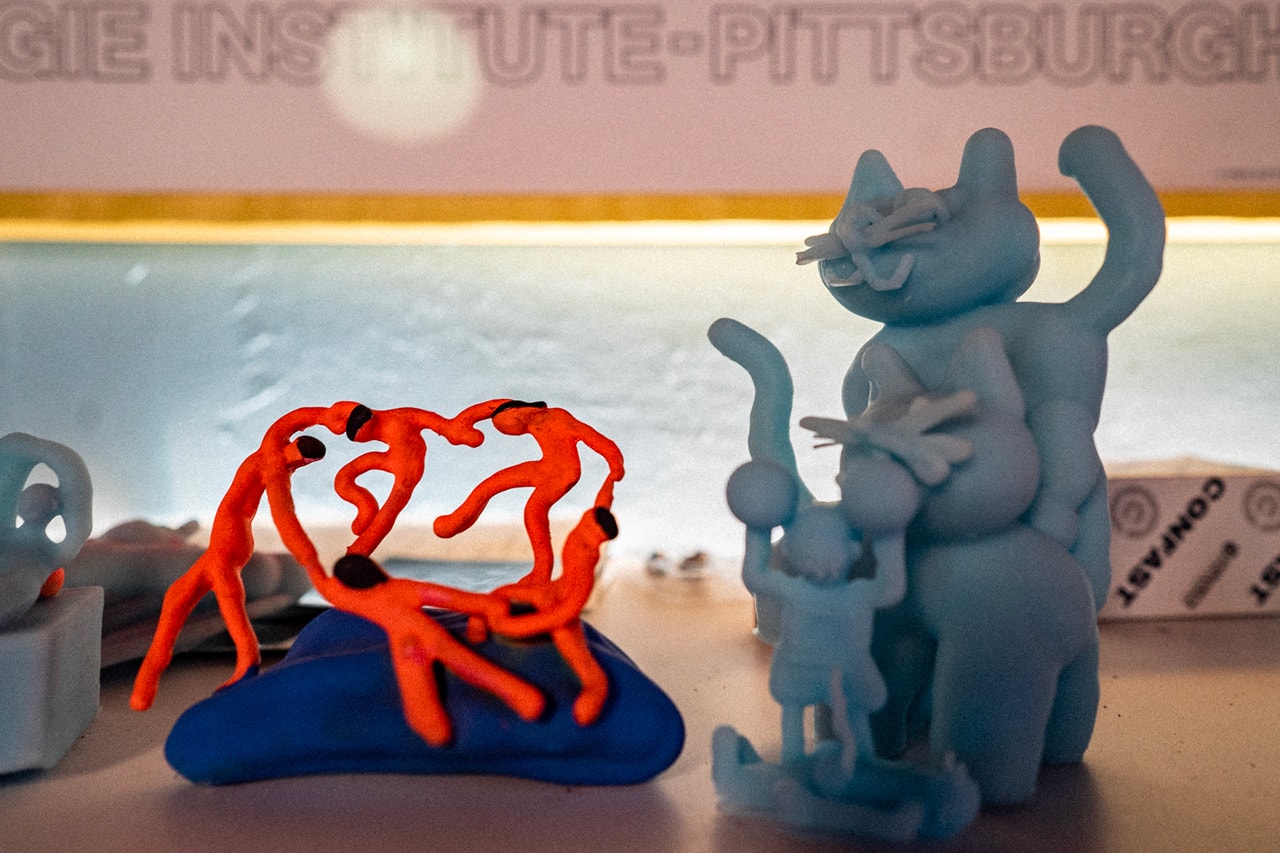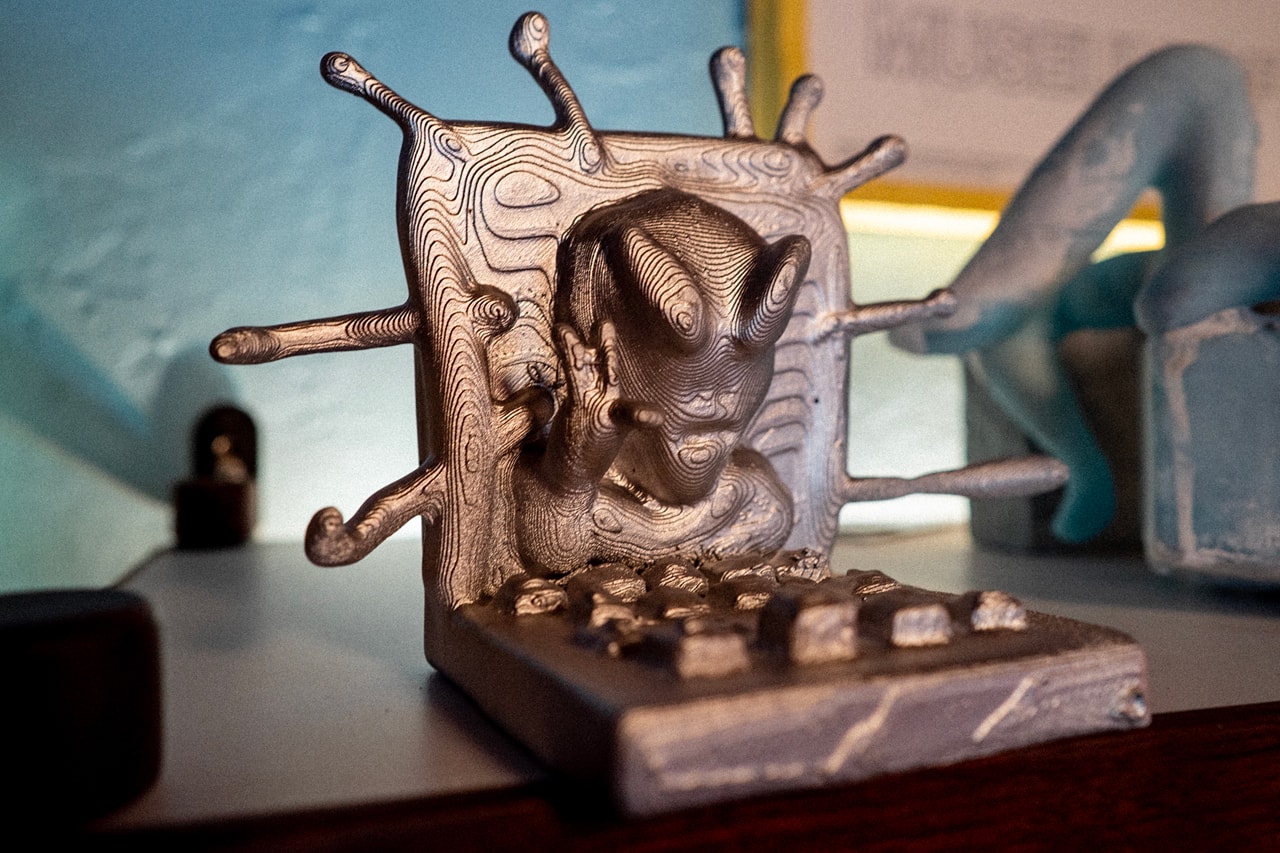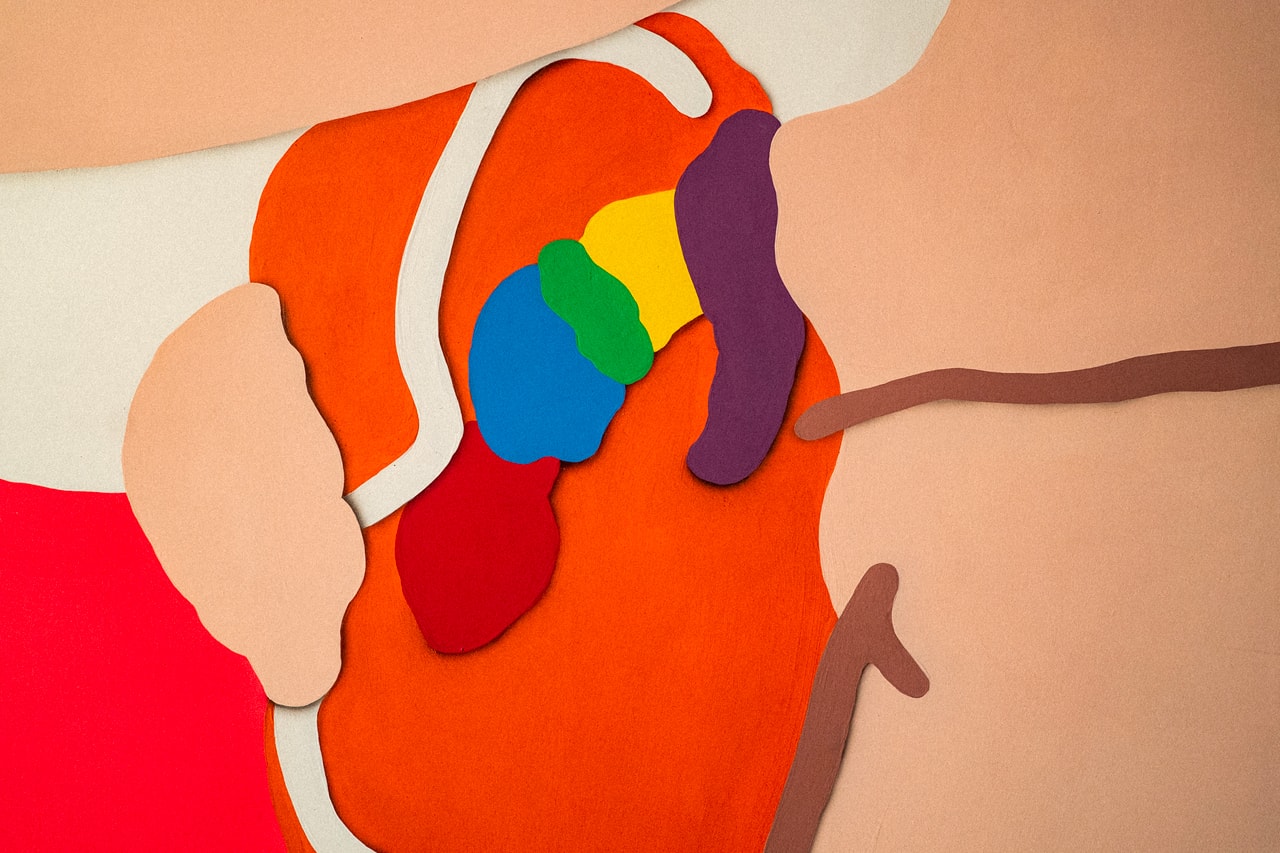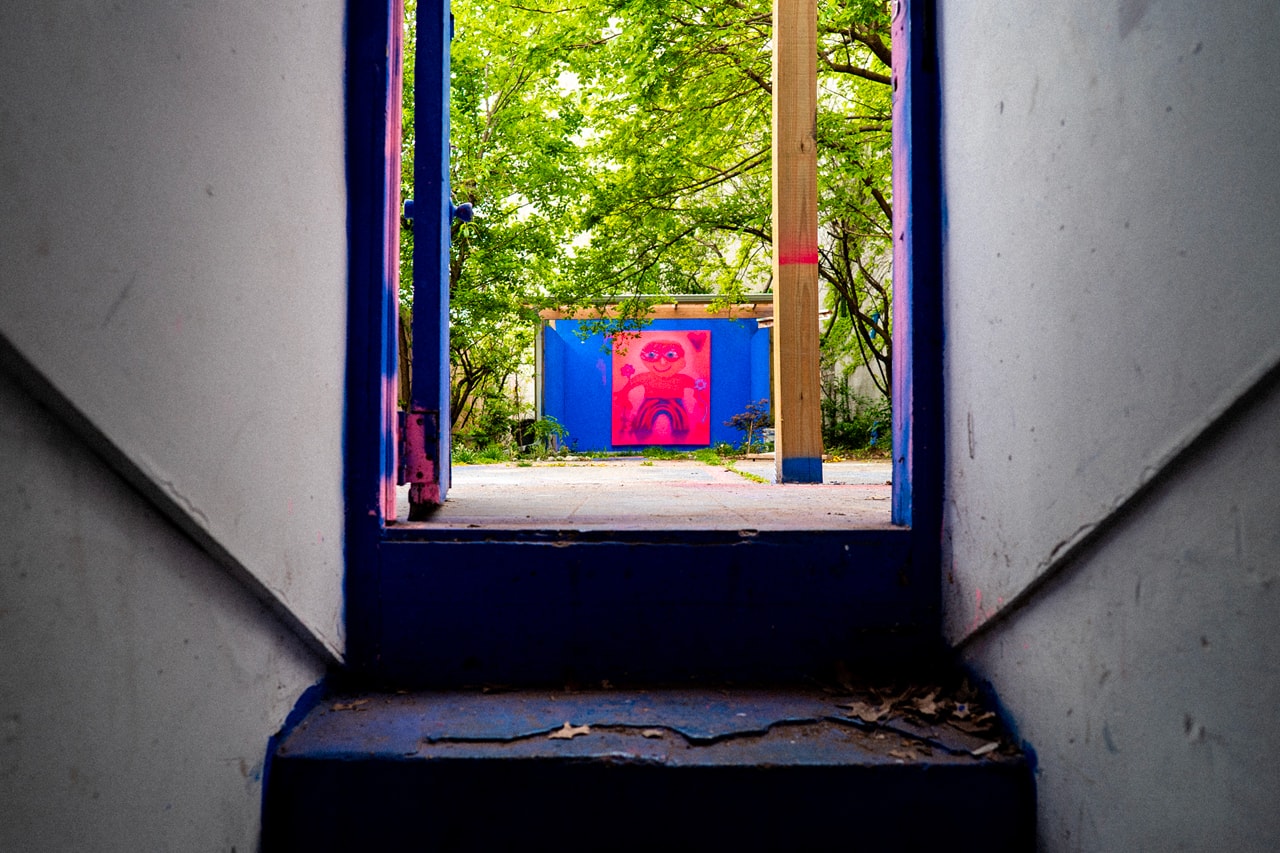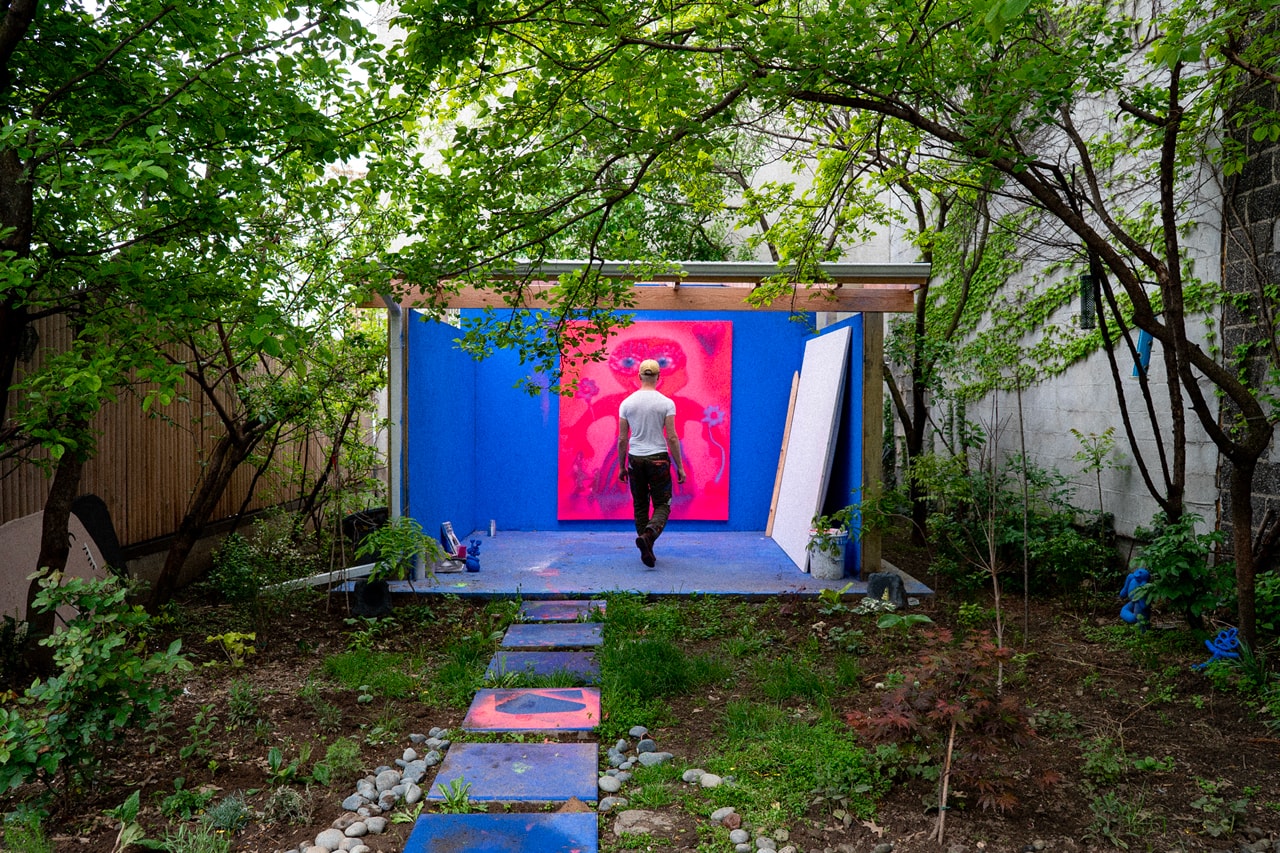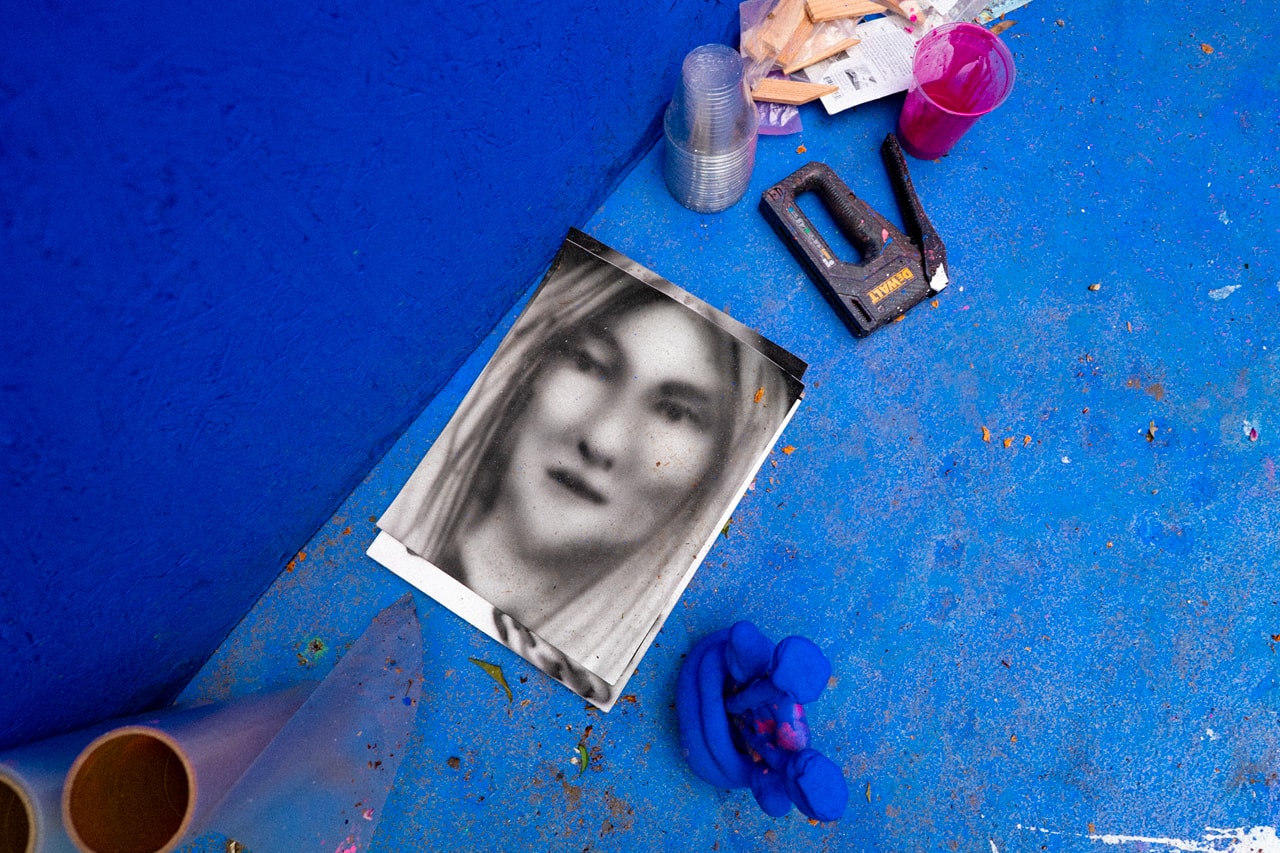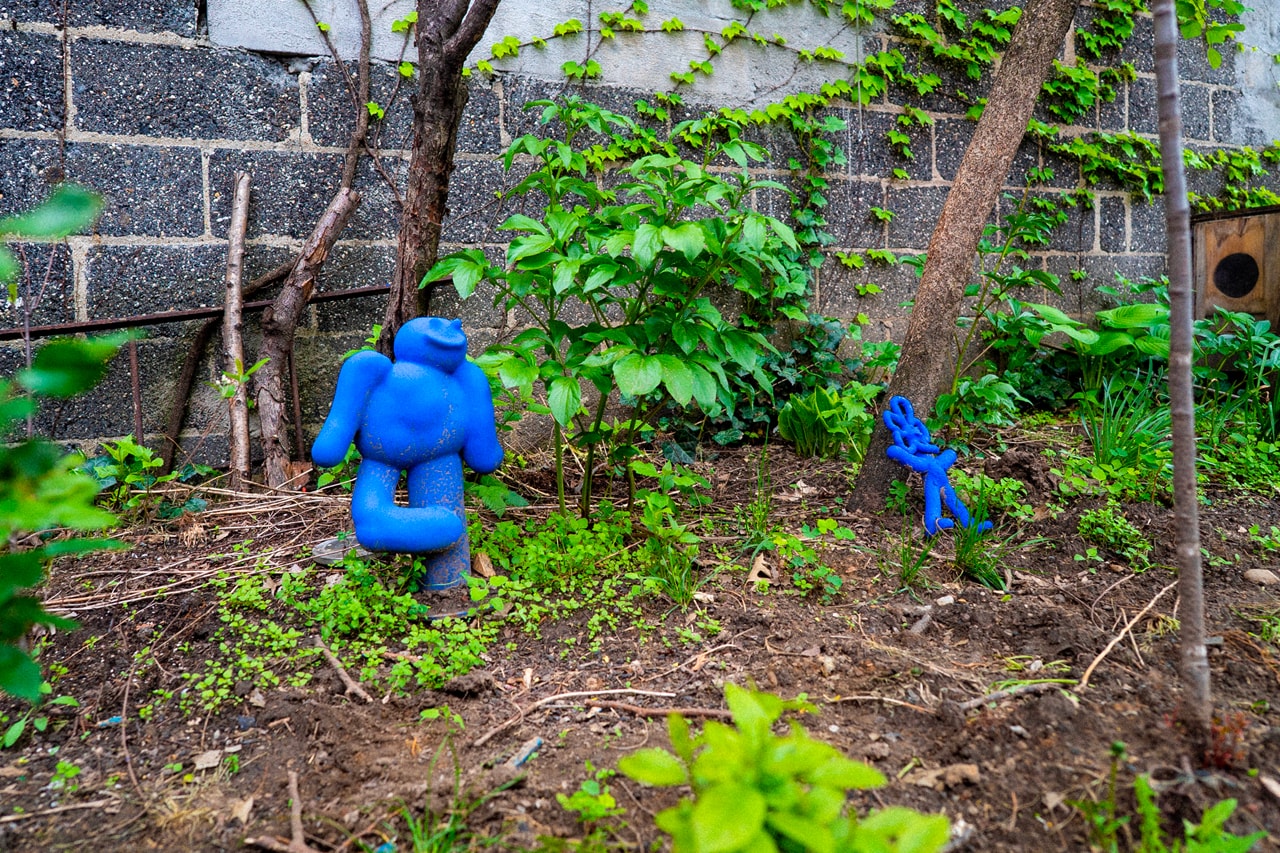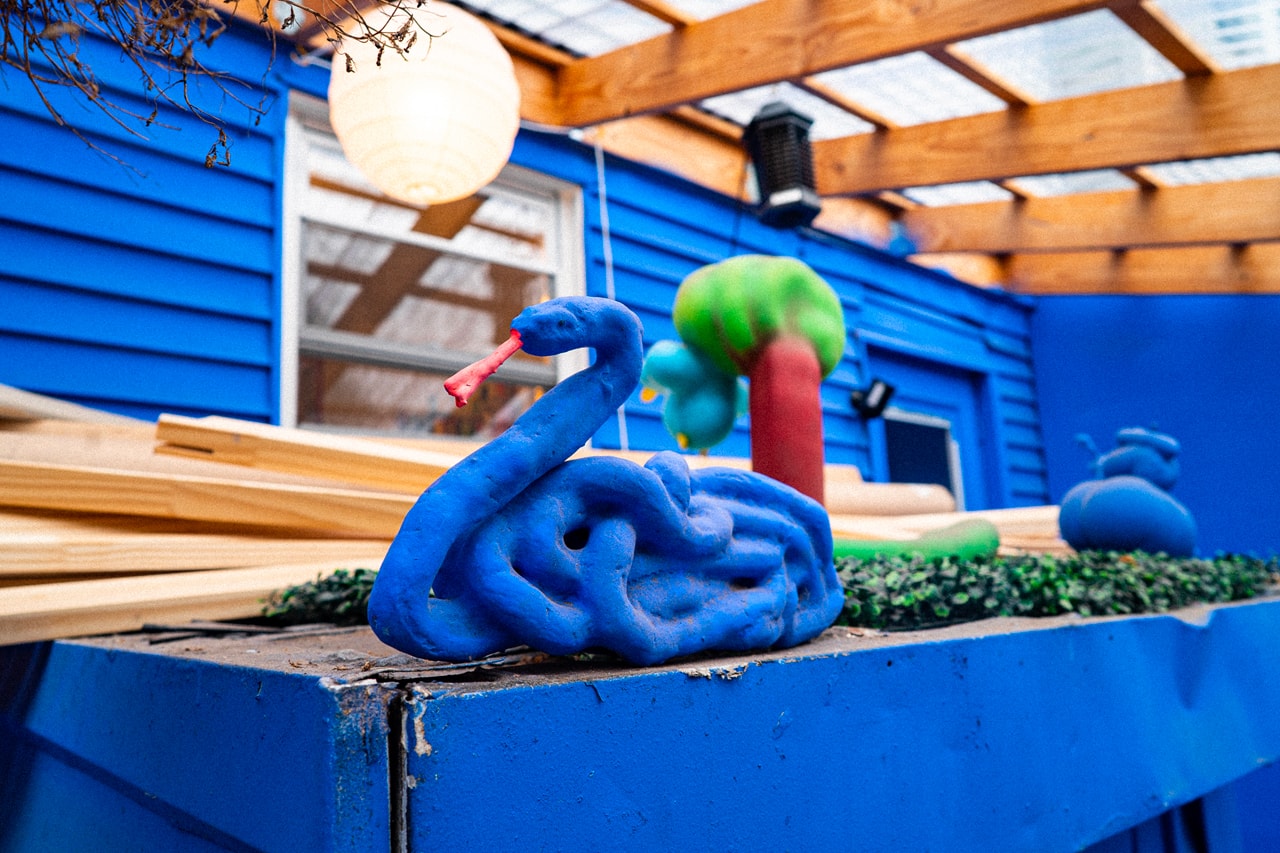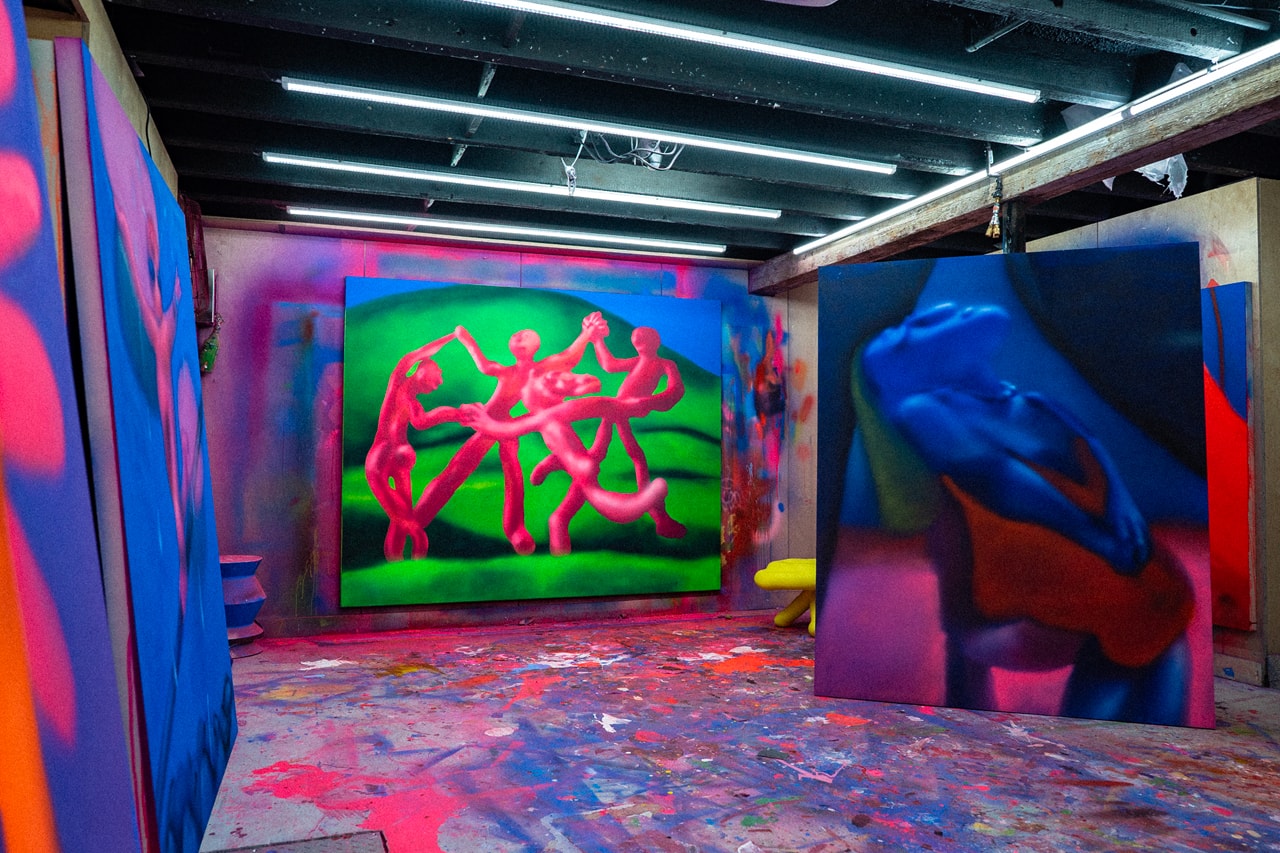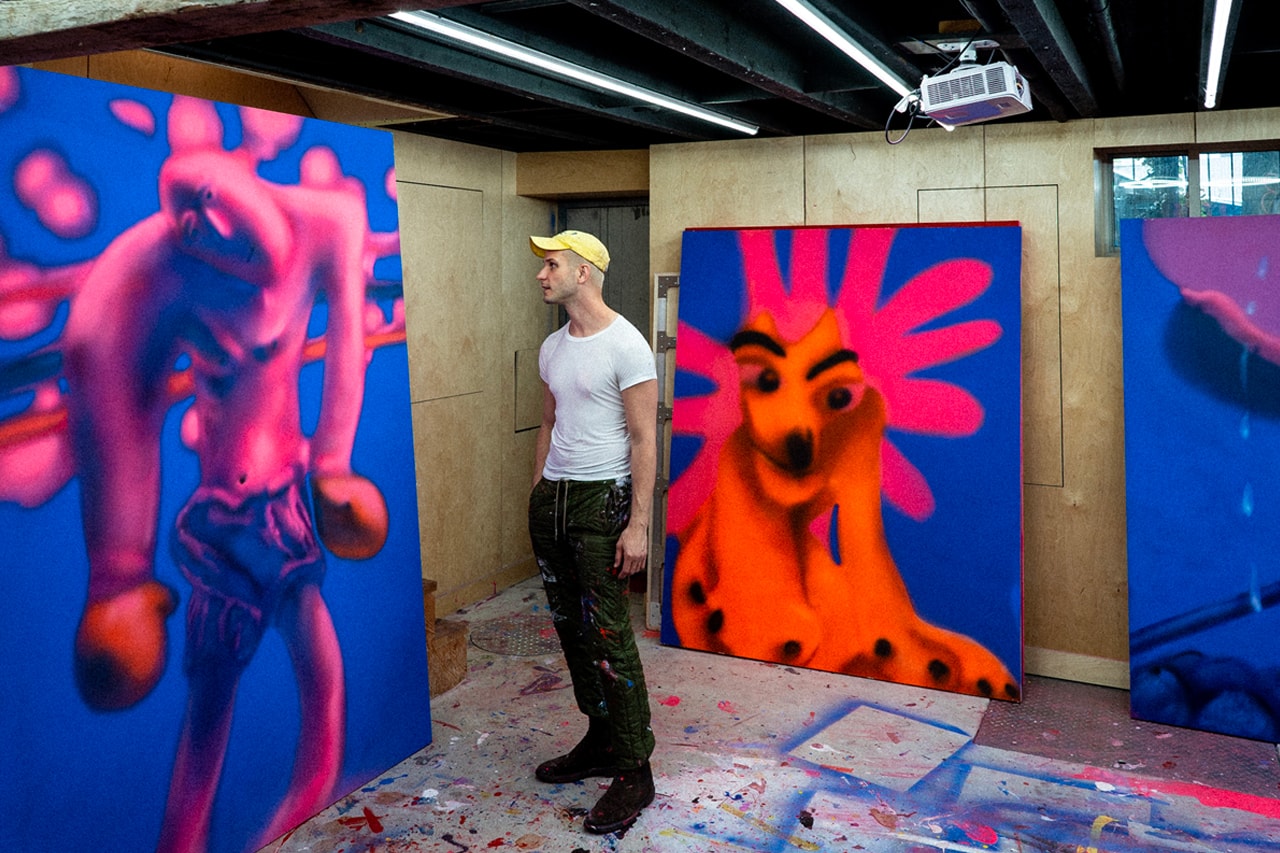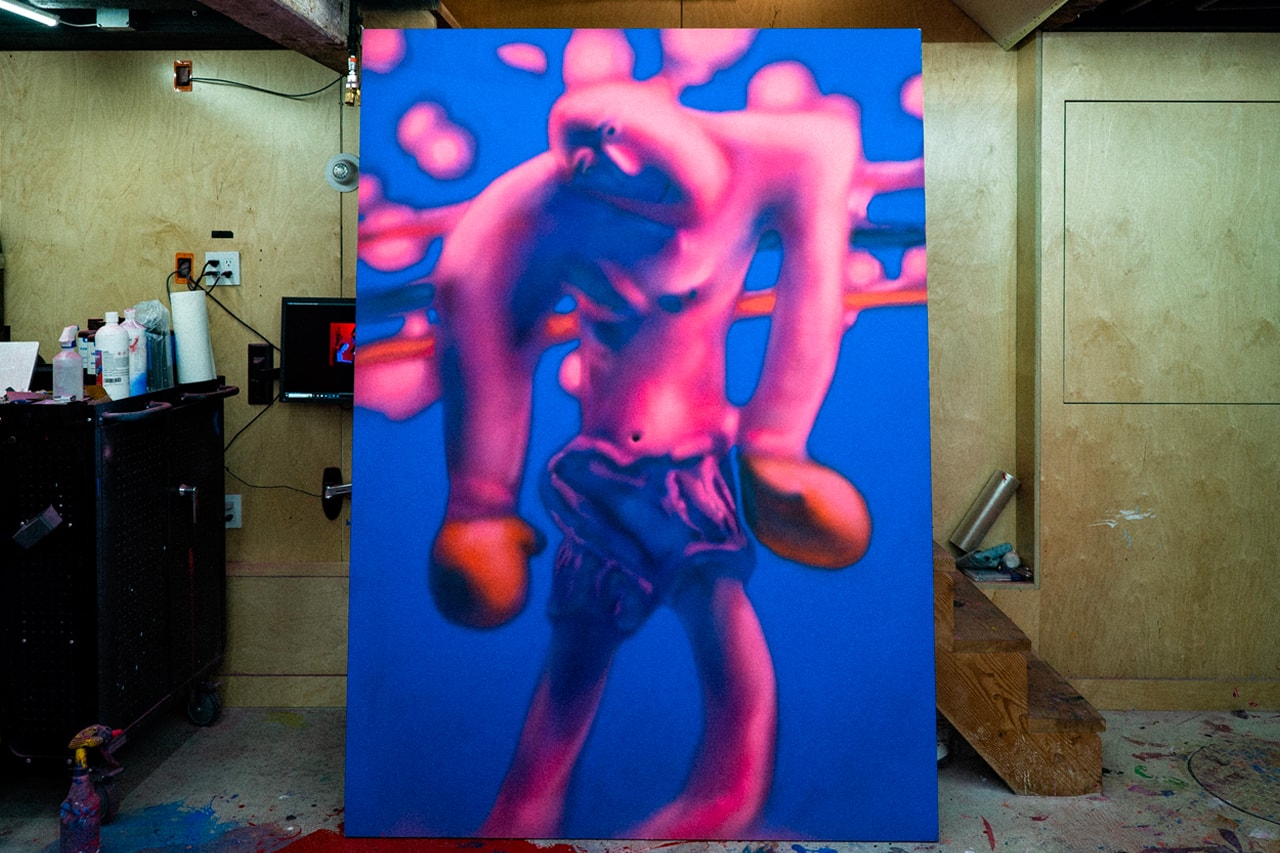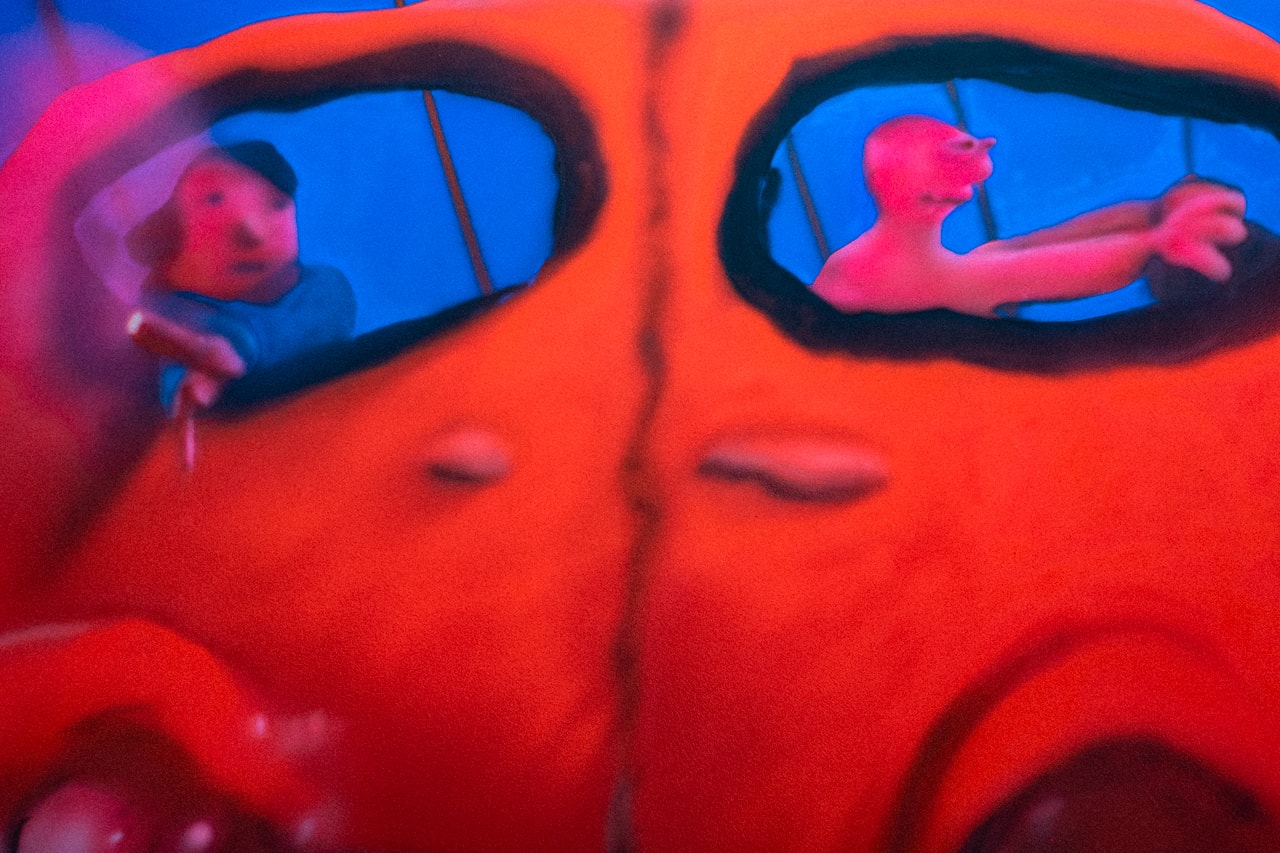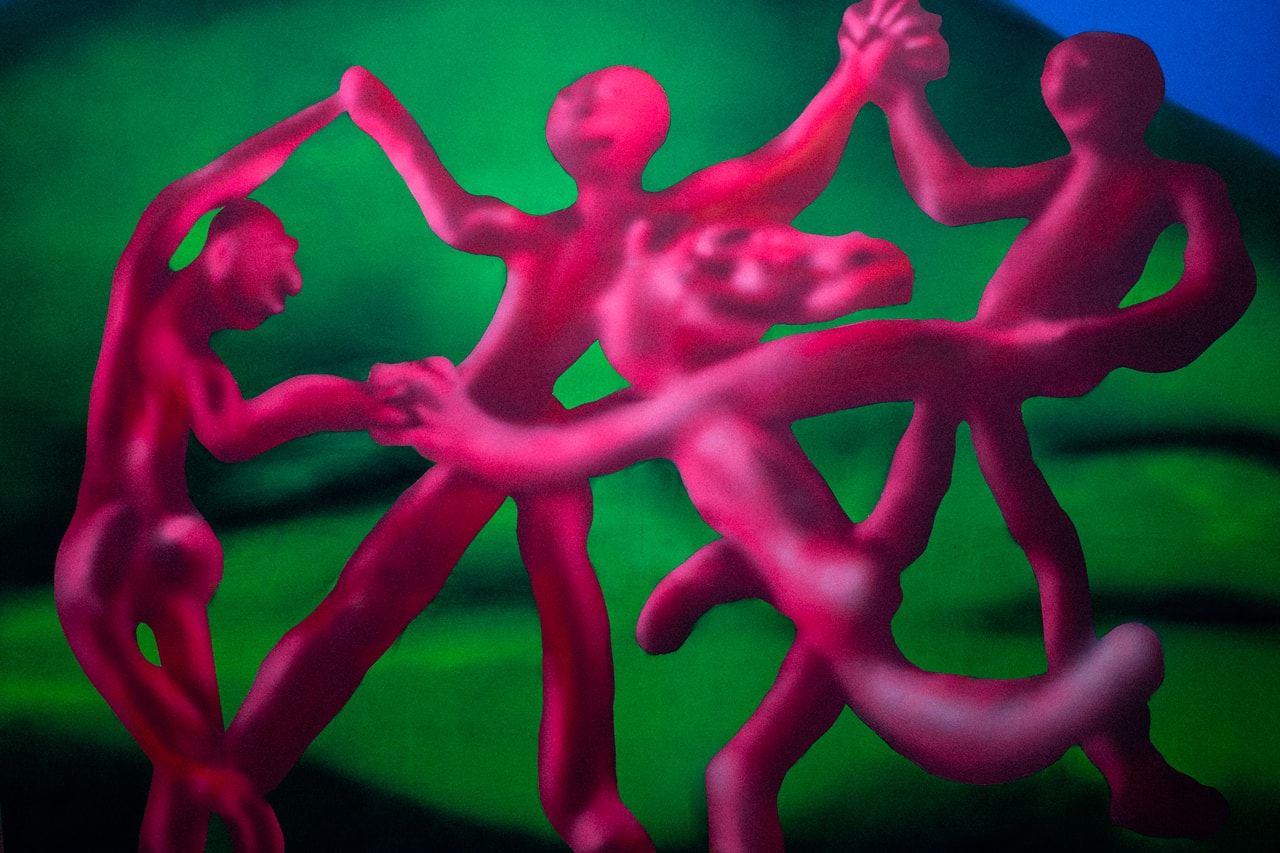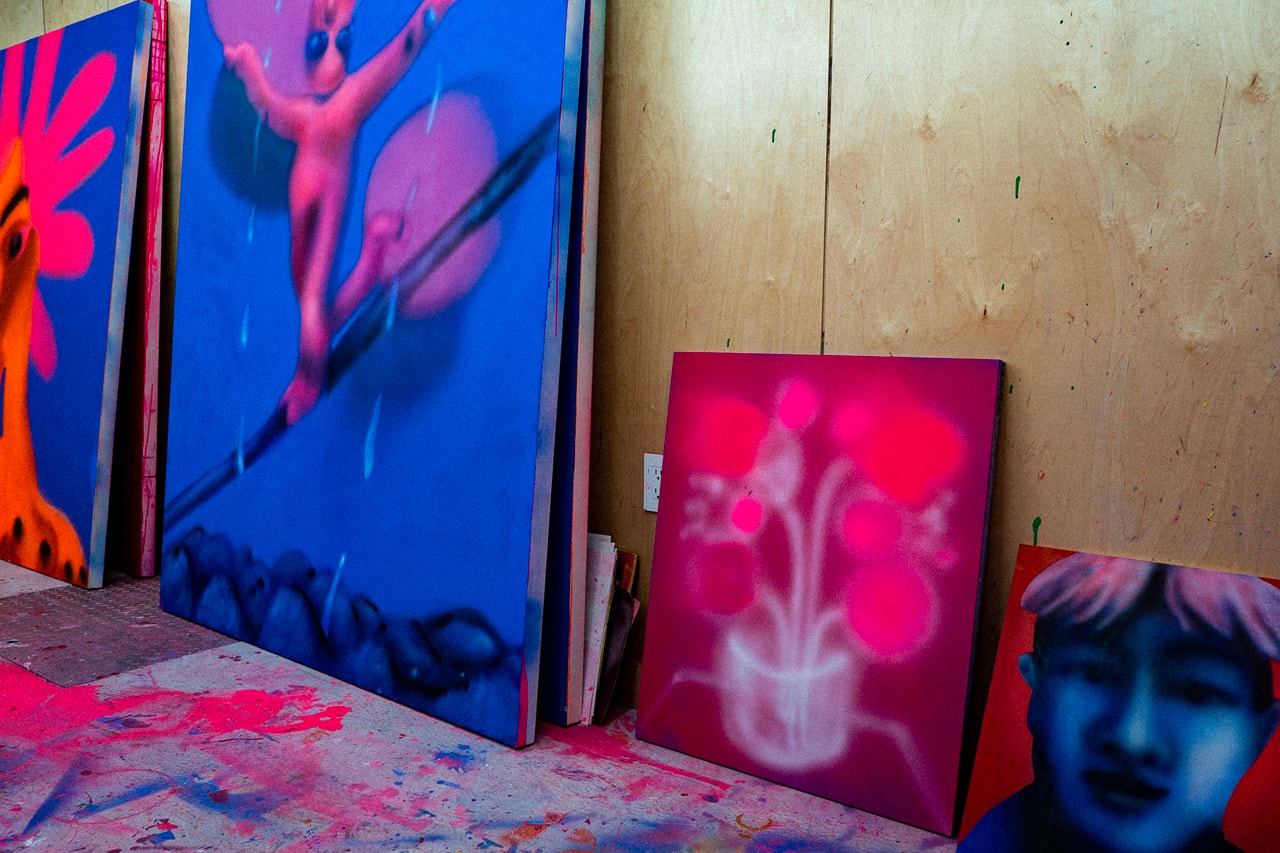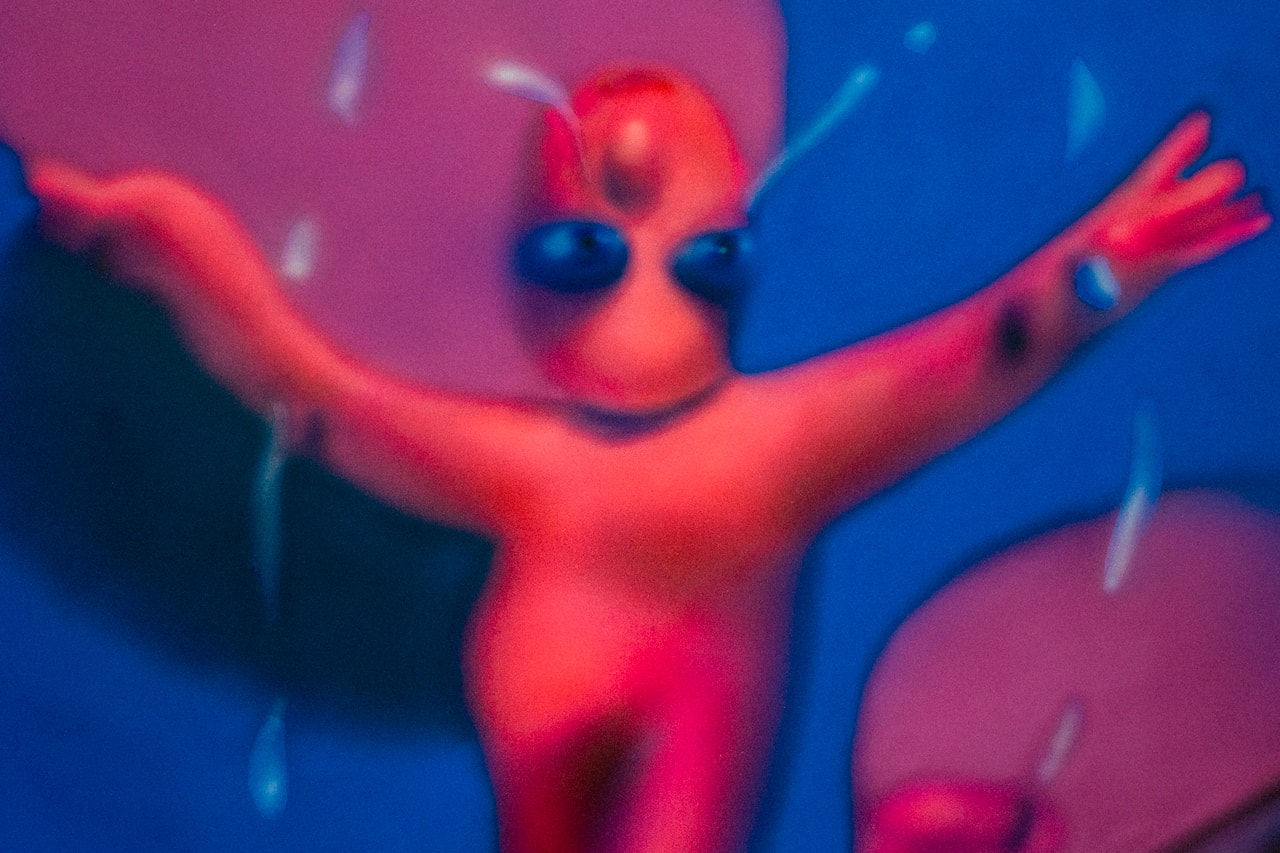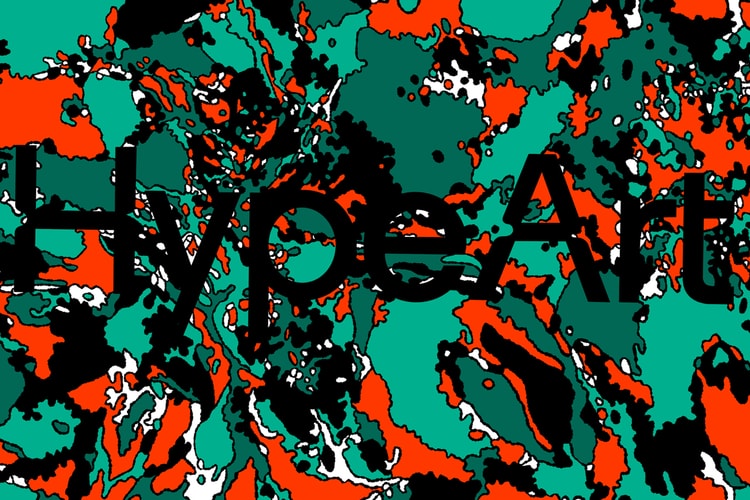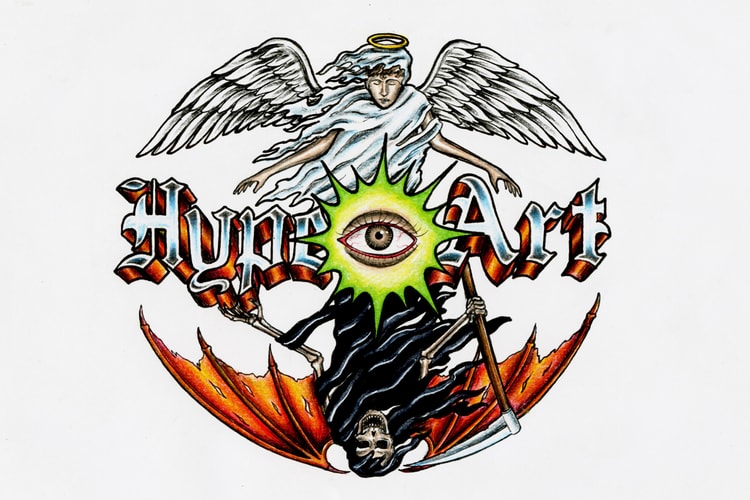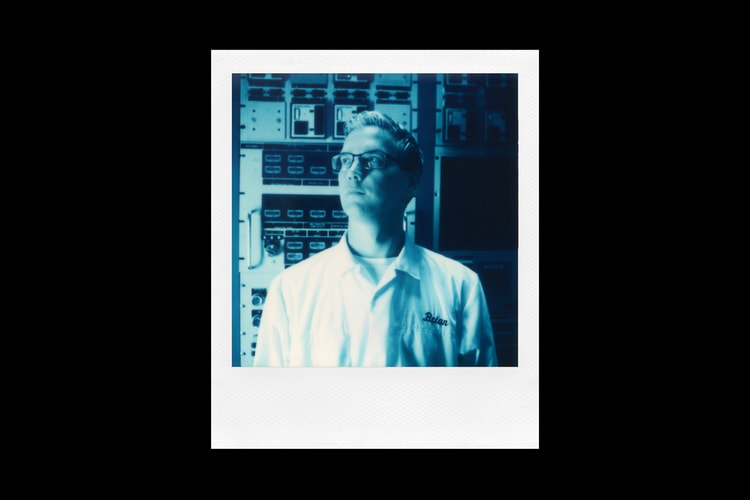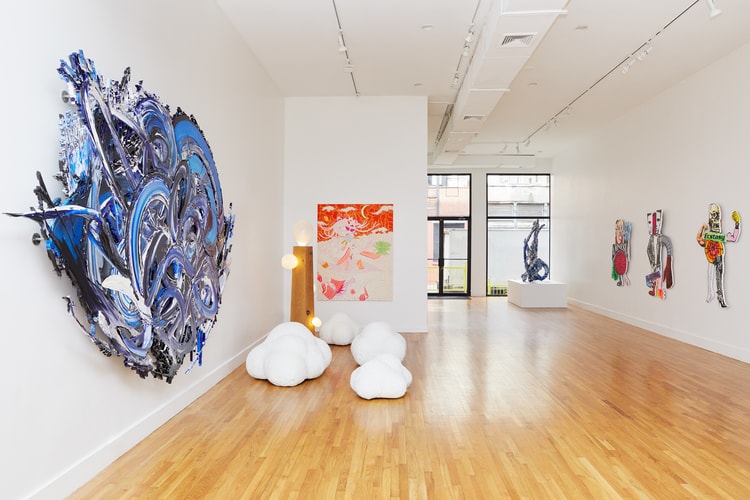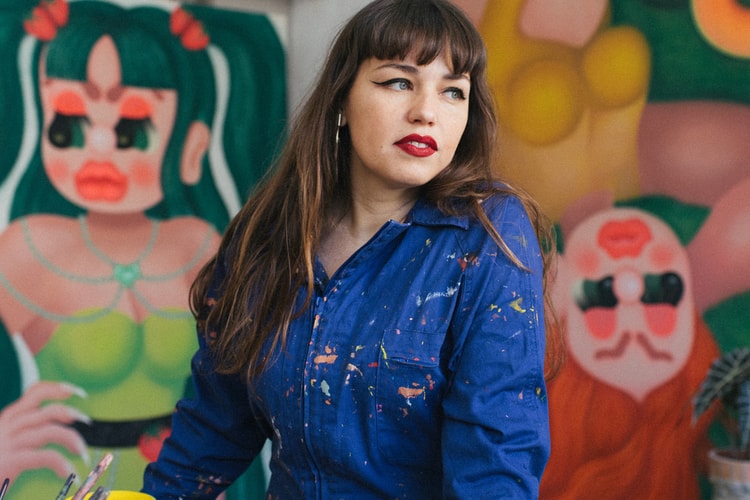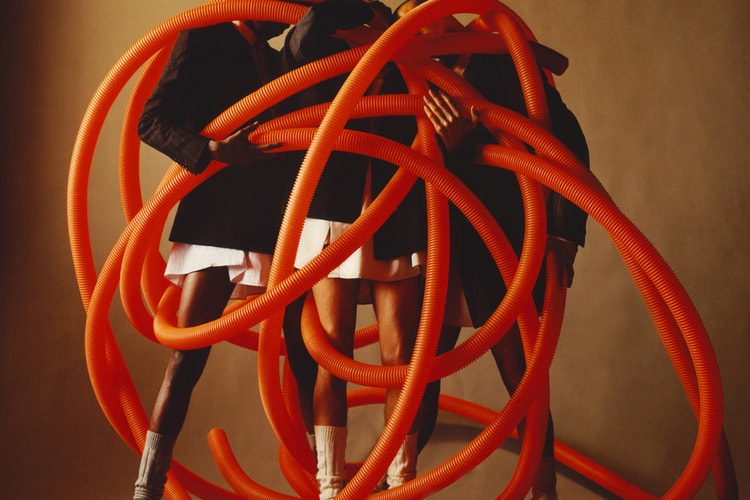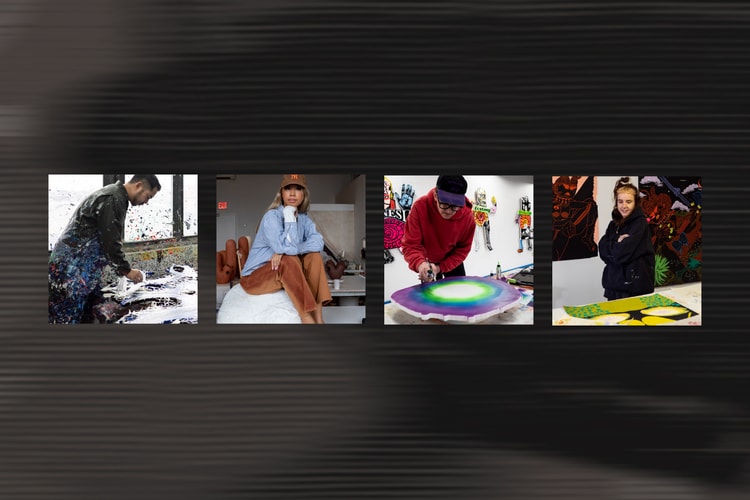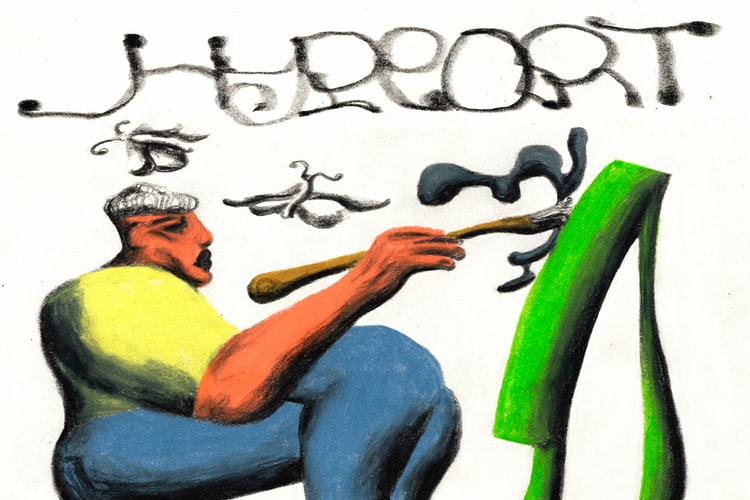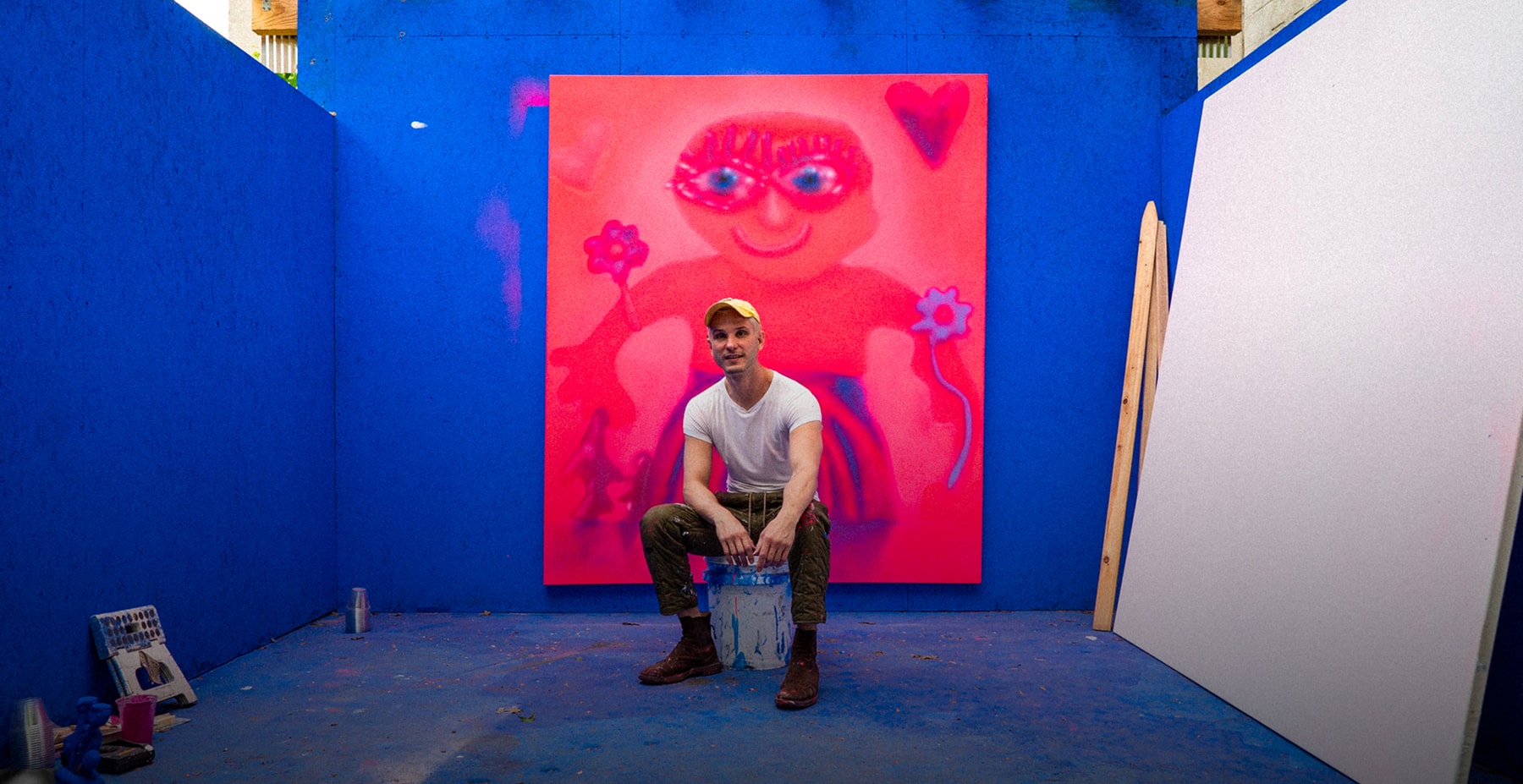

Entertaining, informative, perplexing and amusing are some of the many ways to describe the artwork of Austin Lee. The same can be said when observing the internet. It would make sense then that the two were birthed in the same year.
Born in Las Vegas in 1983 and now based in Brooklyn, Lee’s practice floats between digital technologies and traditional painterly means. While it may be normal nowadays for artists to bypass using a pencil and paper for preliminary sketches, Lee has almost always mapped out his thoughts through the computer. Not reserved to any one preference, he seeks “to bring out the best in each” medium he works with.
Nowadays, Lee regularly uses AR and VR to build the enigmatic worlds his characters operate in and then reverts to airbrush and traditional painterly techniques to bring them to life on canvas. His aesthetic, though difficult to pinpoint, appears somewhere in between the charm of Nintendo 64 graphics and a dystopian future, where horses, flowers and humanoid figures blend within a chromatic void. “There is always a deep sadness around the corner. I don’t put that in the work on purpose but it’s part of who I am and comes out in unconscious ways,” Lee tells Hypeart.
A student of history, Lee is acutely aware of how art is one continuous story — from figures and periods to motifs. His own work is riddled with subtle hints at love, anxiety and the excitement and confusion ushered in by technology. As it is the case within this article, Lee will surely be one of the figures we celebrate in the future, much as the predecessors whom inspired him, as his work reflects the threshold we currently find ourselves in. This ‘phygital’ world where hope and uncertainty, sadness and ecstasy twirl around in Matisse-like fashion.
Having recently showcased several major solo exhibitions, including a show at Jeffrey Deitch in New York, the Wallach Art Gallery at Columbia University, along with his current show at Pace Prints, Hypeart caught up with Lee to discuss his practice, how he develops his pieces and his thoughts on the emergence of new technologies, such as AI.
As a child of the ‘80s, what were your earliest memories of art?
I remember drawing a horse in school and the other students liked it and I felt good about myself. I feel like this moment helped shape me as an artist, as I was pretty shy so it was a way to connect with other people that I didn’t have otherwise. I also remember drawing hair on my desk and then adding a little shadow underneath.
These were the days long before most families got a hold of a home computer. What interests did you largely gravitate towards and how do you think it seeped into your work today?
My family did get a computer pretty early, I think in the mid ’90s. My dad’s friend talked him into buying one with some money he got from a car accident. Kind of funny because it was such an impractical thing for them at the time and they didn’t really need it, but it really helped influence me and shaped my life. I remember making drawings on the computer more than with pencil and paper.
Your art exists between traditional methods and digital tools. How would you describe your practice?
I try to find a middle ground between the two. Poking at the language of painting and digital culture in an attempt to bring out the best in each one. Usually I’m using digital tools to reflect the digital aesthetics of today and showing the results through the form of painting and sculpture.
“It was a conscious decision to prioritize my lived experience.”
Walk us through your process, from the earliest thought to final execution.
I make a drawing using an e-ink style tablet so it functions like pen and paper. I do a lot of sketches and then I translate the interesting ones into 3D models that I draw using virtual reality. Once I have a 3D model created, I bring it into a blender and compose a scene with lighting, atmosphere, and create a digital image. Afterwards, I look at that image and make a painting inspired by it. Sometimes, I 3D print a sculpture from these digital models and I’ve been exploring artwork that takes these two different forms and try to find the best way to communicate the idea.
You reference art history subtly but consistently throughout — from Johannes Vermeer to Man Ray, László Moholy-Nagy to David Hockney. Is there an overarching set of themes consistent to your practice?
Yes, I feel like art is a continuation of visual language shared with other artists so it’s nice to add on and quote some of the same ideas. A few themes in my work that I find myself constantly referring back to are horses, cars (technology), relaxing, love and anxiety. I’ve been recently making lots of nods to Matisse who is one of my favorites and realized his The Dance painting is likely referencing a work by William Blake called Oberon, Titania and Puck with Fairies Dancing, which was nice to discover. I think it’s nice to revisit these standards and each artist brings some new meaning in. If a lot of the variables are the same, you start to notice the differences in how each artist goes about it in a new way. What they care about becomes evident.
Technology has progressed significantly since your youth and even days studying art in college. Several things come to mind, what are your thoughts on social media and the influx of information that we live with on a daily basis.
I think it’s overwhelming for us. There is a lot of information coming at us and an expectation for people to turn their lives into “content.” When I got my first digital camera in the early 2000’s I remember taking photos all day and trying to capture the day. I got to a point where I realized it was stopping me from enjoying life in the moment so I decided to stop. I was more worried about sharing the experience than being in it. That’s when I started painting more. It was a conscious decision to prioritize my lived experience but then use painting to process and share what I experienced later. I think a lot of people are in that earlier phase now though where they are prioritizing capturing moments over experiencing them.
As an artist who frequently works with digital tools, such as virtual reality software, what are your thoughts on artificial intelligence platforms? From Midjourney and Stable Diffusion — which many argue infringes on artist’s rights and may have harrowing consequences down the line.
At first I was really curious about the AI image making tools and was experimenting quite a lot. I even made a few paintings inspired from it. I would put in my own paintings or sketches and have it make variations on my work. I thought it was nice to see what unusual compositional decisions it would produce.
It is also interesting to see how it would interpret my abstract ideas of forms and figures and recognize them. It’s impossible to know how a human sees something unless they tell you, but with this tool, I could see visually how it was identifying the objects in my painting. It’s clear when it understands something or misunderstands it. Sometimes this would help me see it better too. One time it thought a baby in my painting was a coffee cup. When I looked at the original again my drawing did actually look like a coffee cup. So it helped me see my image with new eyes.
But overall most of the images I made using it lacked something. I think a lot of my work has a melancholy spirit even if they appear cheerful. There is always a deep sadness around the corner. I don’t put that in the work on purpose but it’s part of who I am and comes out in unconscious ways. I think that’s kind of what AI misses. It’s pulling from a million different things at once and doesn’t have a specific lived experience. It will occasionally make something that feels that way but it isn’t as consistent since it’s not coming from one vantage point.
One of your recent shows at Jeffrey Deitch featured works inspired by the Rorschach test. Can you explain further.
I had quite a few traumatic experiences with people around me having mental breaks during the pandemic, while trying to understand all that I was reading about the Rorschach test. I had previously just thought of it as interpreting inkblot stains which just gave the viewer interpretations of what they saw, which I think is kind of how paintings work. Everyone sees it differently based on their experiences.
The actual test is a specific group of ten images and the person giving the test kind of has specific things in mind that they are looking for with interpretations. Once I realized this, I thought it would be interesting just to show people what I see in these specific tests so I made paintings of that instead of just describing it.
“Joy feels superficial without acknowledging sadness.”
Technology is always about a progression, learning from the mistakes of the past to push forward in any industry or software. When you reflect on where the world is at in terms of art and the larger realm of culture, what excites you and what scares you?
Hmmm, yeah I think AR and VR seem interesting to me. They currently feel like a novelty but I think the hardware will improve soon making it more connected to our lived experience. I think when we look back to our current moment it will feel so awkward doing everything through a tiny phone. A phone seemed like a gateway to this world but it certainly isn’t the best and last interface for digital interaction. I guess what scares me is how much advertising and propaganda will be indistinguishable from our lived experiences.
Can you talk about your latest exhibition Double-Rendering at the Wallach Art Gallery at Columbia University?
Yes, I was asked by a curator named Ho Won Kim to participate in a show in relation to his research and he is writing about my work. He really seemed to understand where I was coming from, so I agreed. I wanted the show to be about joy and realized joy feels superficial without acknowledging sadness, so it has a little of both. All the work has originated in VR but it’s kind of a very concise exploration of these simple ideas in a few different mediums. We are also doing a talk with Jacob Gaboury who wrote a book called Image Objects: An Archaeology of Computer Graphics. He talks a lot about the history of computer graphics and how they shape the world around us.
You dabble across a range of creative mediums. What is a dream project you aim to accomplish in the years ahead?
I would love to make a sculpture park someday. Something like Nikki Saint de Phalle’s park in Tuscany is very inspirational.
All photos courtesy of Keith Estiler for Hypeart.







